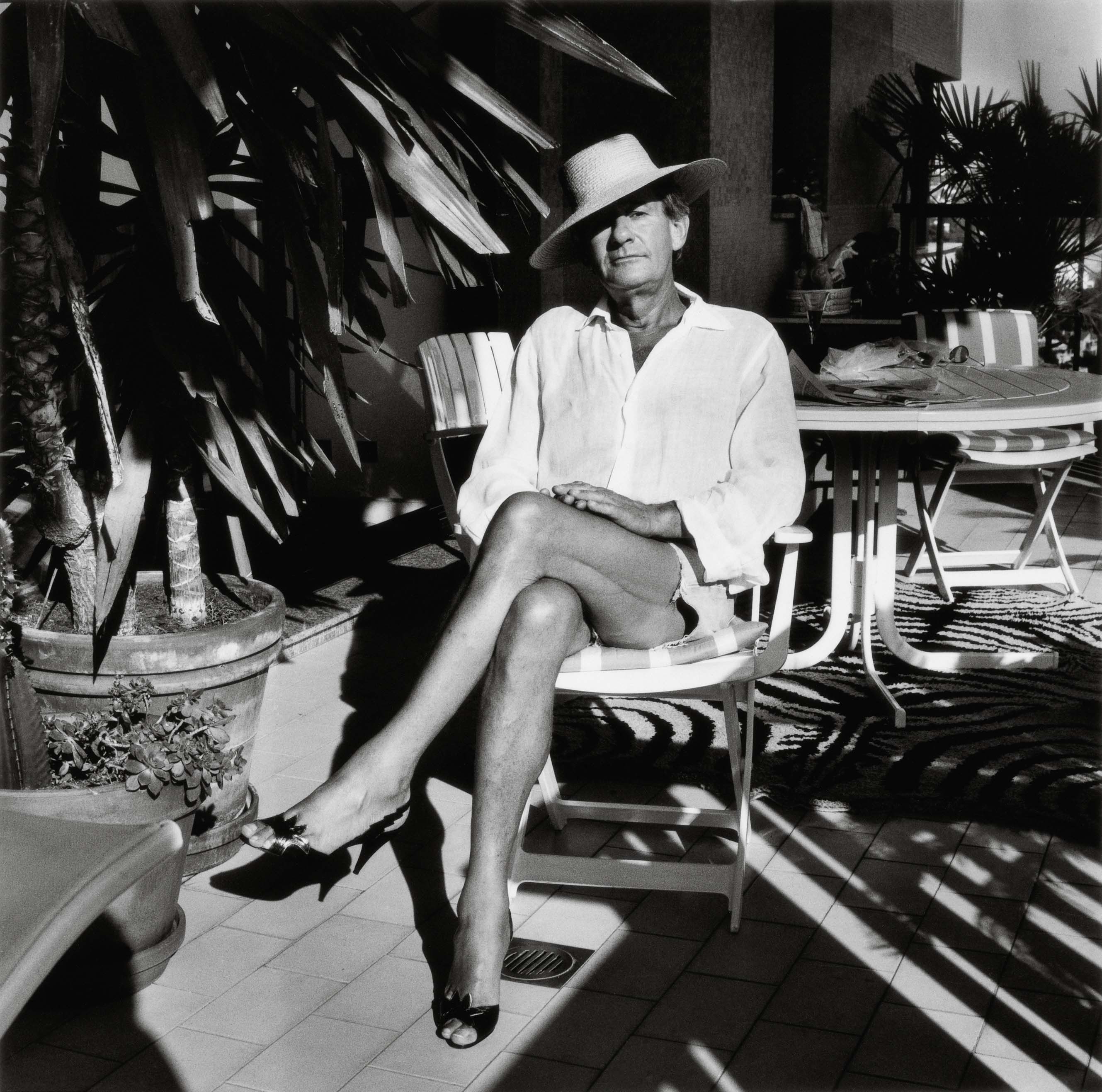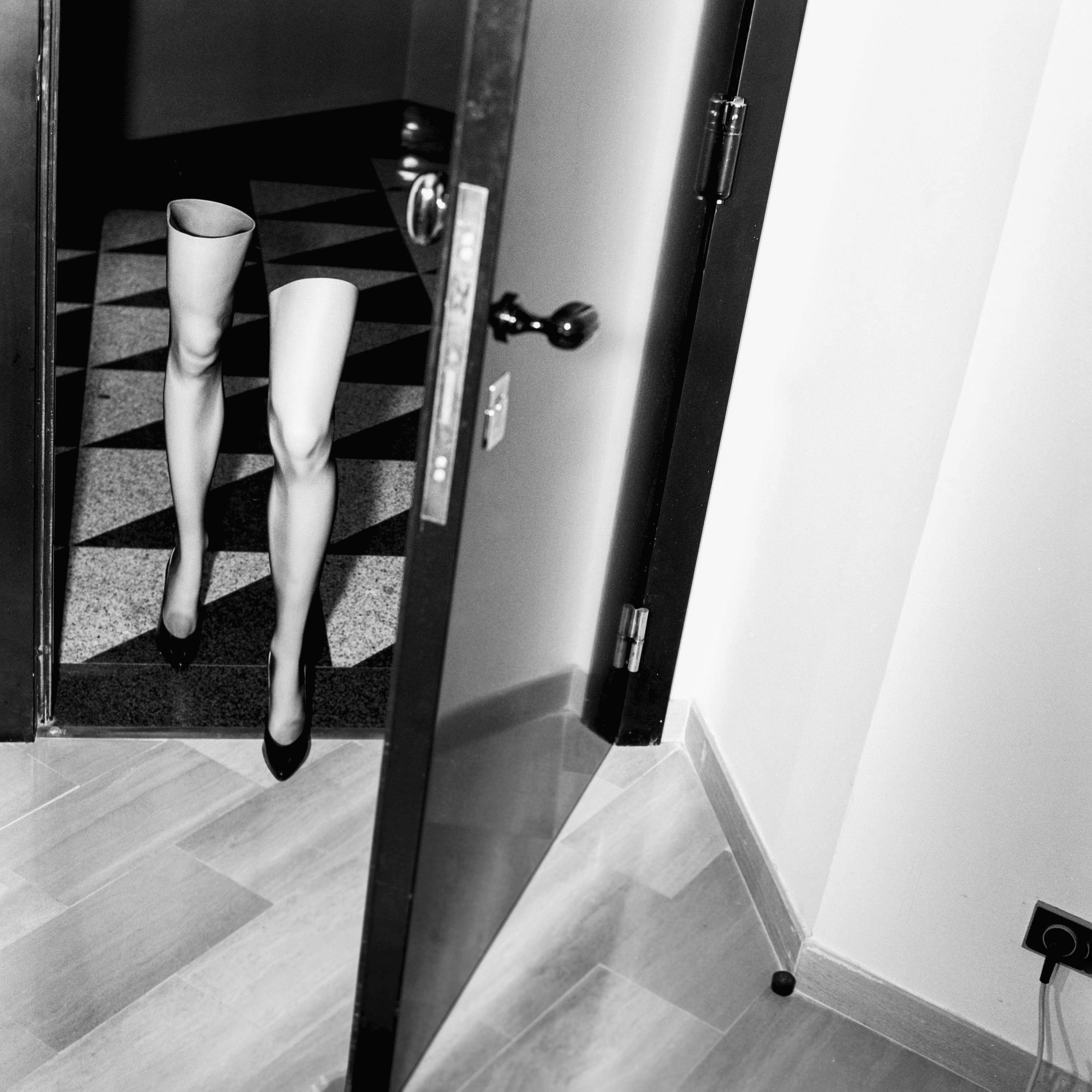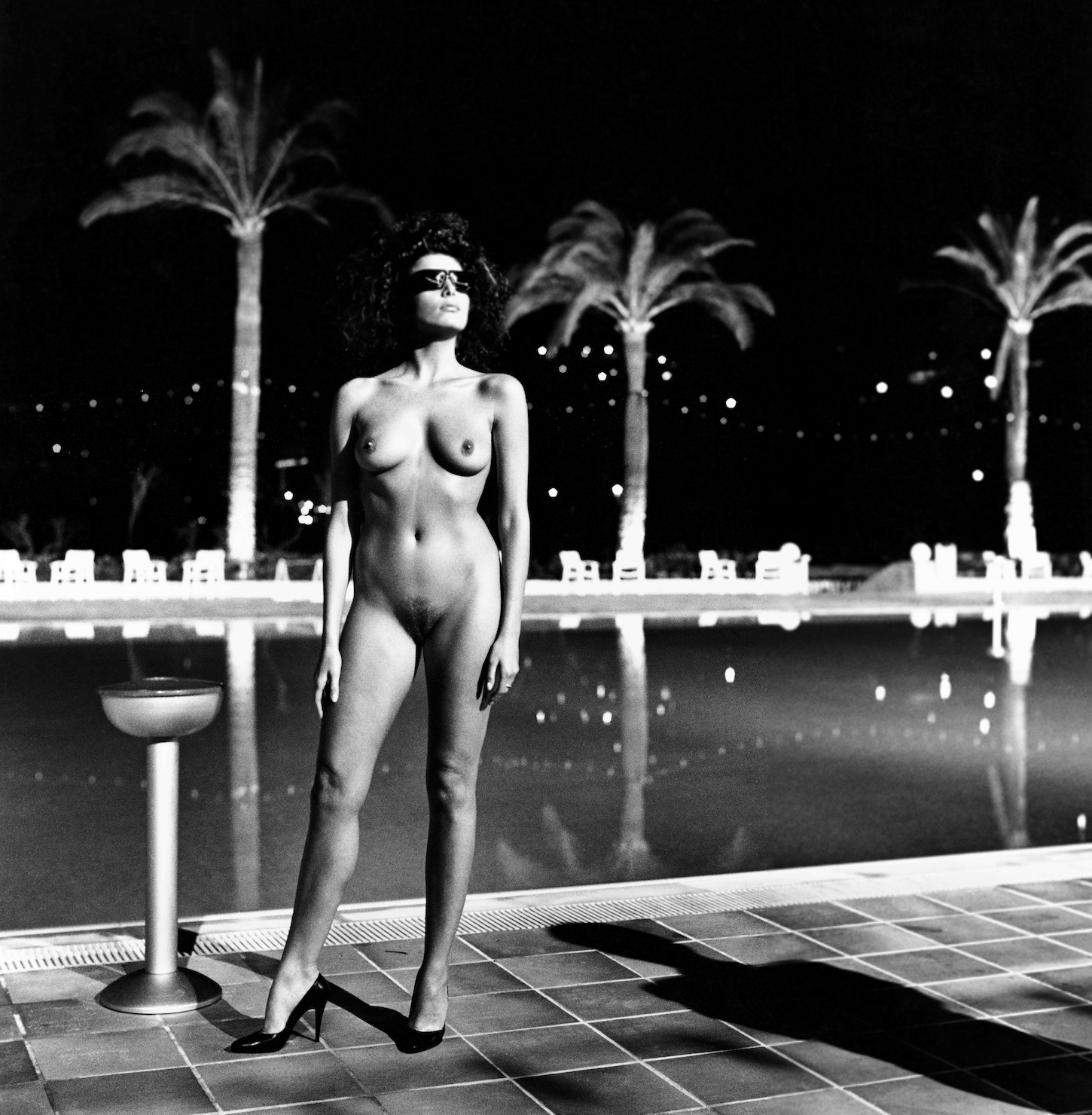Newton, Riviera
Helmut Newton had already photographed the Cote d’Azur on several occasions by the time he settled in Monaco in 1981. Celebrated for his seductive photo shoots in fashion magazines and for his collaborations with the likes of Saint Laurent and Mugler, he brought a different, more experimental eye to the images of this sun-bathed, artificial setting. From pool scenes and celebrity portraits to uncanny compositions, he found great freedom in Monaco. Writer and photographer Guillaume de Sardes, curator of the exhibition Newton, Riviera at the Villa Sauber of the New National Museum of Monaco, explores the legacy of this icon of fashion photography.

From 1981 to 2004, Helmut Newton used Monaco as his signature setting. Are there specific elements in his work that characterise this period?
Newton’s years in Monaco were the freest of his career. His fame allowed him to pursue his ideas to the fullest. He was no longer constrained by anything. Monaco was used as a backdrop – whether it was the swimming pool at the Beach Club or the construction sites all over the city. Newton then developed his series of dark glamour inspired by crime scenes. He also made several portraits of the beautiful people who either lived there or were just passing through. He is both the actor and the privileged witness of this society, both splendid and artificial.
Fashion has largely contributed to Helmut Newton’s fame. Would you say that his work brought credibility to fashion photography, which was scorned for its “commercial” purpose for a long time?
Probably, but indirectly, in the sense that Newton was one of the first fashion photographers to cross over from the pages of magazines to the walls of art galleries and museums. This symbolic passage occurred in 1981, when his Big Nudes were exhibited in the Parisian gallery of Daniel Templon. Two years later, his work was presented at the Musée de l’Art Moderne in Paris. It was a consecration.
This shift became possible because Newton’s images go beyond the field of fashion photography to take part in a more global history of images. This is what I wanted to highlight in the exhibition “Newton, Riviera”, by insisting on Newton’s links with the Surrealist movement. Indeed, he uses the most characteristic motifs of the movement, such as the night, the eye, the doll, the mirror and sadomasochism.

One room focuses on his work with the dancers of the Ballets de Monte Carlo. Would you say that the athletic and graceful bodies of these dancers match the Newtonian ideal?
Absolutely. Helmut Newton would be interested above all in the body’s aesthetics. It is therefore revealing that he worked for almost ten years with the dancers of the Ballets de Monte-Carlo without ever photographing them dancing! He worked with them as if they were models. This series, commissioned by Princess Caroline, confirms the intuition of Bernard Lamarche-Vadel who wrote about the Big Nudes: “Photography does not exist, the history of sculpture lives on.”
Beyond nudity and sensuality, how would you define the Newton woman?
A cliché would be that she is a strong woman. This is not untrue. Newton liked women who were athletic and confident in themselves and their desires. But every cliché needs to be tempered and there are more ambiguous images in Newton’s work… One thing is certain: women always take center stage, so much so that one could speak of Newton’s world as a world without men. This is the title he gave to one of his books.
What makes Helmut Newton’s photography so relevant today?
GS: Newton has become a classic and therefore deserves to be studied over and over again, just as one rereads Racine’s plays over and over again. Revisiting Newton allows us to understand how much today’s photographers owe to him, but also how much Newton owes to his predecessors, especially Man Ray and Brassaï. Images are born from images, ad infinitum.
This interview has been lightly edited for clarity.

Newton, Riviera continues at the New National Museum of Monaco until November 13th, 2022.



